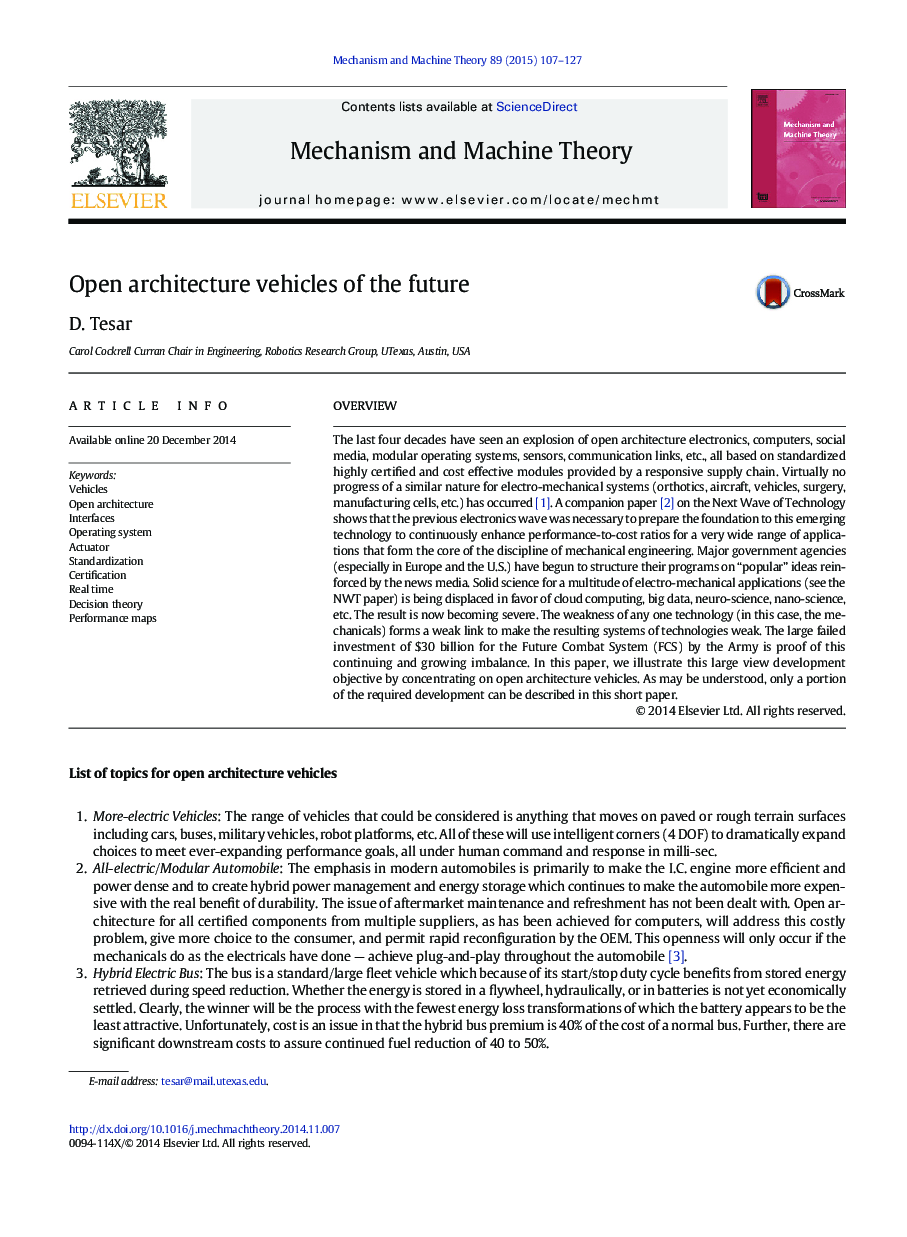| کد مقاله | کد نشریه | سال انتشار | مقاله انگلیسی | نسخه تمام متن |
|---|---|---|---|---|
| 801728 | 1467745 | 2015 | 21 صفحه PDF | دانلود رایگان |
• Objective is to revolutionize all scales of vehicles to make them open architecture.
• Open architecture enables rapid assembly, repair, and refreshment to increase performance/cost ratios.
• Standardization of a minimum set of highly certified components by means of a responsive supply chain built of multiple suppliers.
• Dominant intelligent component is the actuator with emphasis on an electric multi-speed hub drive wheel and a rugged responsive active suspension actuator.
• Dominant system technology is the real time management in milli-sec. of all wheel traction forces to maximize efficiency, improve safety and manage single point failures.
OverviewThe last four decades have seen an explosion of open architecture electronics, computers, social media, modular operating systems, sensors, communication links, etc., all based on standardized highly certified and cost effective modules provided by a responsive supply chain. Virtually no progress of a similar nature for electro-mechanical systems (orthotics, aircraft, vehicles, surgery, manufacturing cells, etc.) has occurred [1]. A companion paper [2] on the Next Wave of Technology shows that the previous electronics wave was necessary to prepare the foundation to this emerging technology to continuously enhance performance-to-cost ratios for a very wide range of applications that form the core of the discipline of mechanical engineering. Major government agencies (especially in Europe and the U.S.) have begun to structure their programs on “popular” ideas reinforced by the news media. Solid science for a multitude of electro-mechanical applications (see the NWT paper) is being displaced in favor of cloud computing, big data, neuro-science, nano-science, etc. The result is now becoming severe. The weakness of any one technology (in this case, the mechanicals) forms a weak link to make the resulting systems of technologies weak. The large failed investment of $30 billion for the Future Combat System (FCS) by the Army is proof of this continuing and growing imbalance. In this paper, we illustrate this large view development objective by concentrating on open architecture vehicles. As may be understood, only a portion of the required development can be described in this short paper.
Journal: Mechanism and Machine Theory - Volume 89, July 2015, Pages 107–127
